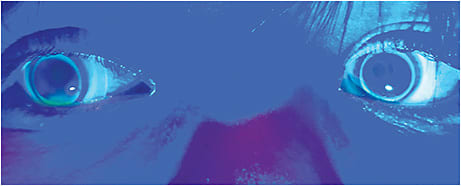Astigmatism is a refractive condition commonly encountered in pediatric clinical practice. In fact, high amounts of corneal astigmatism are often found at birth (Mutti et al, 2004). As children grow, the cornea flattens with significant reduction in astigmatism (Mutti et al, 2004). Over the age of four years, the frequency of large amounts of astigmatism is low, with small to moderate amounts of with-the-rule (WTR) astigmatism being most common (Read et al, 2007). With respect to juvenile myopic progression, increased spherical myopia may be associated with higher amounts of WTR astigmatism (Read et al, 2014).
To date, there are no studies that have evaluated myopia management (MM) in children with high astigmatism (>3.50D). Nevertheless, it may be inferred that the same principles of reducing myopic progression by focusing light in front of the retina while providing a clear foveal image also applies.
Under-correcting refractive error in children may negatively affect their visual development (Moseley et al, 2009), and, subsequently, their quality of life. Thus, it is especially important to fully correct astigmatism when treating pediatric patients.
Toric orthokeratology and soft toric multifocal (MF) lenses are typically chosen for MM contact lens correction in children who have low to moderate astigmatism. Due to lens instability and rotation with higher amounts of astigmatism, these lens options may challenge the practitioner’s ability to fully correct for the refractive error.
When faced with high astigmatism, GP optics that can neutralize all corneal astigmatism regardless of the rotational position of the lens enables superior quality and stability of vision. These lenses also allow for a predictable correction with center-distance MF optics for decreasing myopic progression. GP lens options with front-surface MF optics for MM include corneal bitoric, hybrid, and scleral lens designs.
A Case in Point
Consider a 5-year-old Asian female referred to our clinic for contact lens correction. She presented with a refractive error and axial length measurements of –0.75 –4.75 x 180 and 24.13mm in the right eye, and –1.00 –5.75 x 180 and 24.53mm in the left eye. This patient also had positive family history of her mother having high myopia and astigmatism. Considering the high astigmatism, this young child was fitted into center-distance hybrid MF contact lenses for MM (Figure 1).

Summary
Contact lens-based MM treatments exist for challenging refractive errors such as high astigmatism. Gaining proficiency in prescribing GP specialty lens modalities will benefit more children who have progressive myopia with high astigmatism. CLS
REFERENCES
- Mutti DO, Mitchell GL, Jones LA, et al. Refractive astigmatism and the toricity of ocular components in human infants. Optom Vis Sci. 2004 Oct;81(10):753-61.
- Read SA, Collins MJ, Carney LG. A review of astigmatism and its possible genesis. Clin Exp Optom. 2007 Jan;90:5-19.
- Read SA, Vincent SJ, Collins MJ. The visual and functional impacts of astigmatism and its clinical management. Ophthalmic Physiol Opt. 2014 May;34:267-294.
- Moseley MJ, Fielder AR, Stewart CE. The optical treatment of amblyopia. Optom Vis Sci. 2009 June;86(6):629-33.




